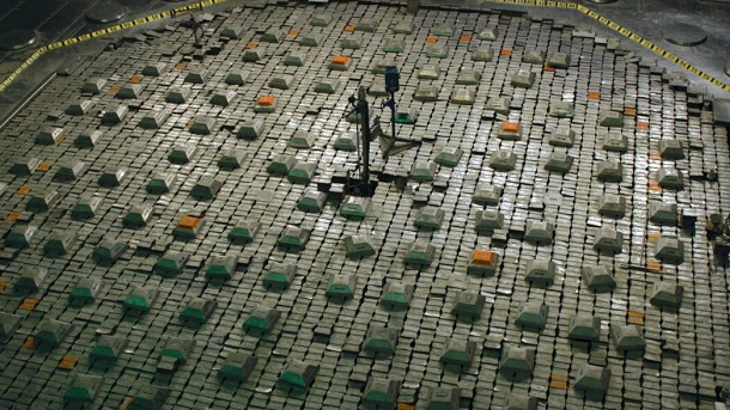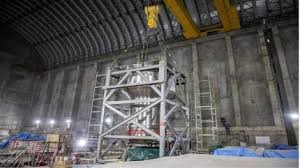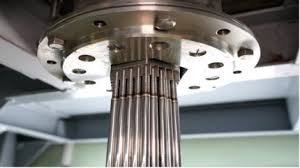
(Image: Rosatom)
ADE-2 began operation in December 1963 and was shut down in April 2010. It was a dual-purpose reactor - in addition to producing weapons-grade plutonium it also provided heat and electricity. Since its closure, the reactor has been operated in the final shutdown mode: the nuclear fuel was unloaded and reprocessed, and the facility was brought to a nuclear-safe condition. It will become the third industrial uranium-graphite reactor at the Mining and Chemical Combine (MCC) to be decommissioned.
The decommissioning of the first stage facilities, where the molten salt research reactor (IZhSR) is planned to be built, will last two years.
The IZhSR project plans to use circulating molten salt fuel. It is part of the wider Russian federal project to develop "new materials and technologies for advanced energy systems" and part of the country's goal of closing the fuel cycle.
"While carrying out the tasks of decommissioning two previous uranium-graphite reactors (AD and ADE-1), the company's employees not only gained valuable experience, but also received several patents for inventions," said MCC Director General Dmitry Kolupaev. "Such projects have no analogues in the world. This is something to be proud of, and we cannot stop there.
"In the near future, new areas of the company's activity will be developed on the areas that are freed up during decommissioning, including an environmentally significant project - a research molten salt reactor. This technology, which makes it possible to utilise minor actinides, is being implemented on an industrial scale for the first time."
Daniil Zhirnikov, director of the decommissioning production at YaRO, added: "The peculiarity of the work that has begun is that the decommissioning of ADE-2 also requires the almost complete dismantling of the underground nuclear thermal power plant. This year alone, it is necessary to dismantle and dispose of more than 200 tonnes of thermal insulation and more than 700 tonnes of metal. In addition to dismantling all pipelines, cables, steam generators, and heat exchangers of the 1963 model, it is necessary to dismantle the reinforced concrete boxes and walls, preparing the site for the placement of the IZhSR and related infrastructure."
Once the work is completed, the ADE-2 reactor will become an industry museum. Therefore, during the decommissioning of the second-stage facilities, it is planned to preserve the historical appearance of ADE-2 itself as much as possible.
In the case of ADE-2, Rosatom noted, the scope of work will be significantly greater than with AD and ADE-1, which were single-purpose, performed only defence tasks and were successfully decommissioned in 2023 using the 'in-place burial' option. In-place burial involves the gradual filling of the space and circuits of the reactor itself, some adjacent non-reactor rooms, with barrier material.







